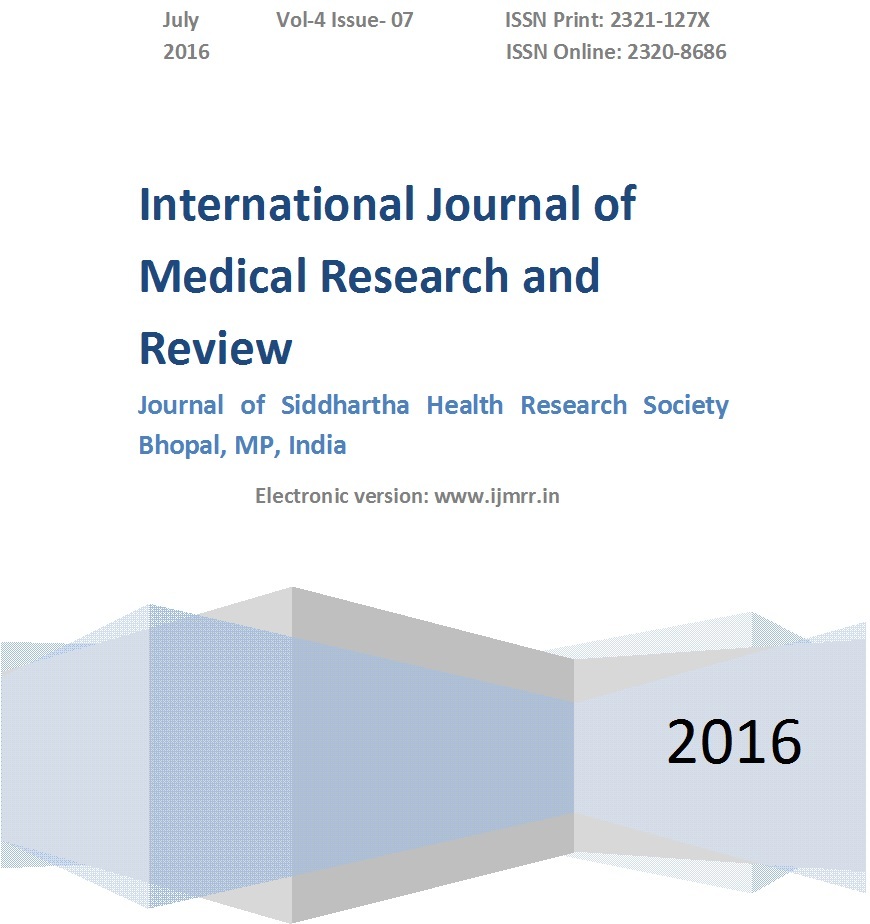Silicone plastination of a whole dissected body
Abstract
Plastination is a technique developed by Von Hagans in the year 1979. In this technique water and lipids present inside the tissue are replaced by a curable polymer, resulting in a dry odorless specimen that can be kept without any change for years together. Water and lipids present in the tissues cannot, however, be replaced directly with the polymer, because the two are chemically incompatible. So initially the water and lipids are replaced by a dehydrating agent like acetone and this dehydrating agent is subsequently replaced by the curable polymer by applying vacuum. The polymer is subsequently hardened, resulting in a dry, odorless specimen. Whole body silicone plastination is done in many institutions of Anatomy in foreign countries. In India plastination of whole dissected bodies using silicone polymer is not practiced until now. In our present study we have plastinated a whole dissected body using a commercially available two component silicone polymer(figure-1) called TSE3455T (A) and a curing agent TSE3455T (B), resulting in a dry odorless dissected whole body specimen, which can be kept in the museum for ready demonstration of the various structures to the medical and paramedical students.
Downloads
References
2. von Hagens G, Tiedemann K, Kriz W. The current potential of plastination. Anat Embryol (Berl). 1987; 175(4):411-21.
3. Henry RW, Silicone Plastination of Biological tissues, Room –temperature Technique, North Carolina technique and products. Journal of International Society for Plastination. 2007; 22: 26-30.
4. Zheng Tianzhong, Liu Jingren and Zhu Kerming, Plastination at Room Temperature. J Int Soc Plastination. 1998; 13(2):21-25.
5. A. Raoof, R.W. HENRY and R.B. Reed, Silicone Plastination of Biological Tissue: Room-temperature Technique DOW/Corcoran Technique and Products. J Int Soc Plastination. 2007; 22:21-25.
6. DeJong K, Henry RW. Silicone plastination of biological tissue: Cold-temperature technique Biodur S10/S15 technique and products. J Int Soc Plastination. 2007; 22:2-14.
7. Glover R, Silicone plastination, room temperature methodology: Basic techniques, applications and benefits for the interested user. J Int Soc Plastination.2004; 19: 7.
8. Zheng TZ, Weatherhead B, Gosling J: Plastination at room temperature. J Int Soc Plastination. 1996; 11 (1): 33.
9. Weiglein,). Weiglein A: Preparing and using S-10 and P-35 brain slices. J Int Soc Plastination.1996; 10 (1): 22-25.
10. Henry RW, Nel PPC: Forced impregnation for the standard S10 method. J Int Soc Plastination. 1996; 7 (1): 27-31.
11. Brown MA, Reed RB and Henry RW. Effects of dehydration mediums and temperature on total dehydration time and tissue shrinkage. JInt Soc Plastination. 2002; 17:28-33.
12. Henry RW, Silicone Plastination of Biological tissues: Cold–temperature Technique, North Carolina technique and products. Journal of International Society for Plastination.2007; 22:15-19
13. J, Zhu K, Plastination at Room Temperature, 9th Int Conf Plast, Trois-Rivieres, Quebec, Canada. Abstract in J Int Soc Plastination. 1998; 13 (2): 29.
14. J. Suganthy, Deepak Vinod Francis, Plastination using standard S10 Technique-Our experience in Christian Medical College, Vellore. J.Anat. SocIndia. 2012; 61(1): 44-47.
15. Riederer BM.Plastination and its importance in teaching anatomy. Critical points for long-term preservation of human tissue. J Anat. 2014 Mar; 224(3):309-15. doi: 10.1111/joa.12056. Epub 2013 Apr 29.
16 .Henry RW. Teaching with plastinated specimens. J Int Soc Plastination.2005; 20:38-39.
17. Olry R, Wax, wooden, ivory, cardboard, bronze, fabric, plaster, rubber and plastic anatomical models: Praiseworthy precursors of plastinated specimens. J Int Soc Plastination. 2000; 15:30-35.
18. Baptista CAC, Skie M, Yeasting RA, Ebraheim N and Jackson WT, Plastination of wrist: potential uses in education and clinical medicine. J Int Soc Plastination. 1989; 3:18-21.
19. Henry RW. Vacuum and vacuum monitoring during silicone plastination. J Int Soc Plastination.2005b:20:37.
20. Gubbins RBG: Design of a plastination Laboratory. J Int Soc Plastination. 1990; 4 (1): 24-27.
21. Baptista CAC, Belhn P, Plagge MS and Valigosky M: The use of explosion proof freezers in plastination: Are they really necessary? J Int Soc Plastination.19926 (1): 34-37.



 OAI - Open Archives Initiative
OAI - Open Archives Initiative


